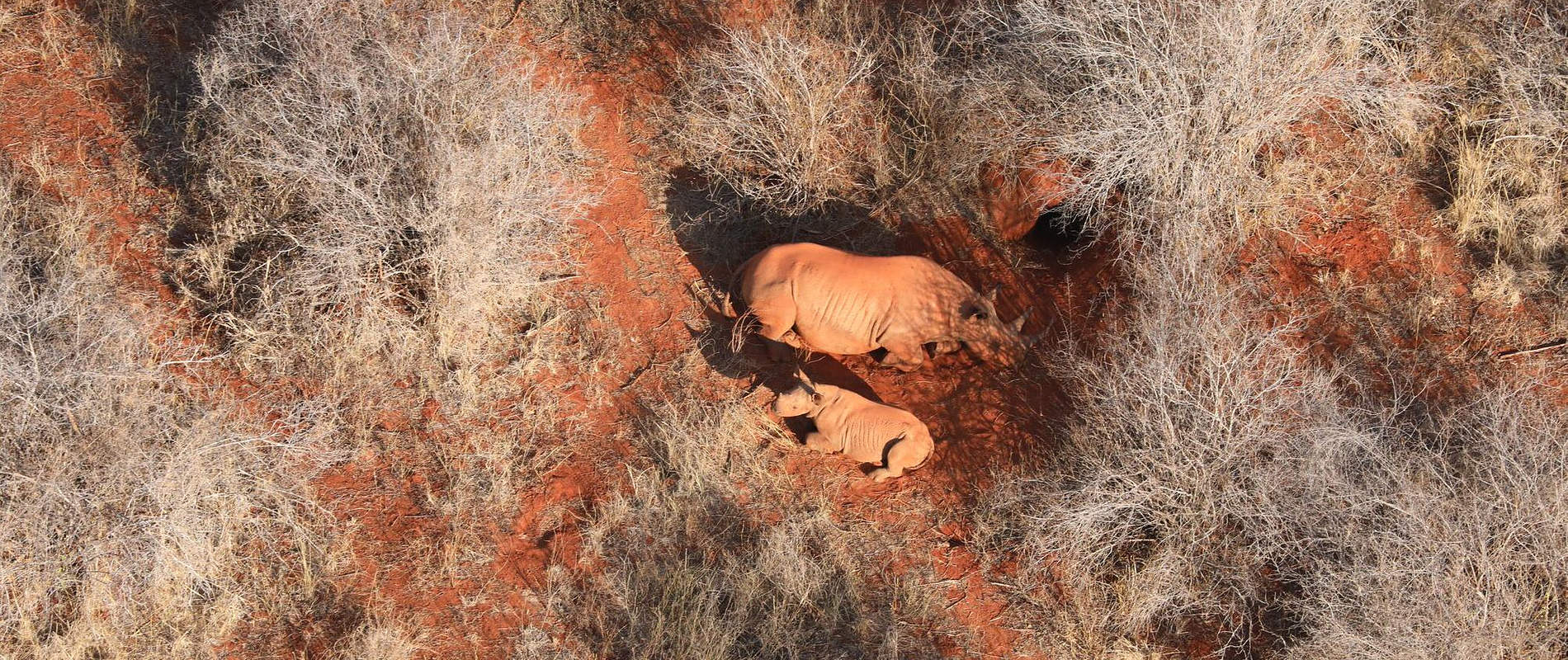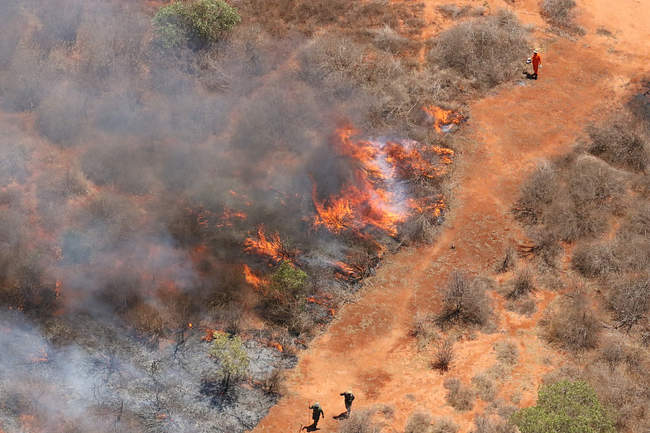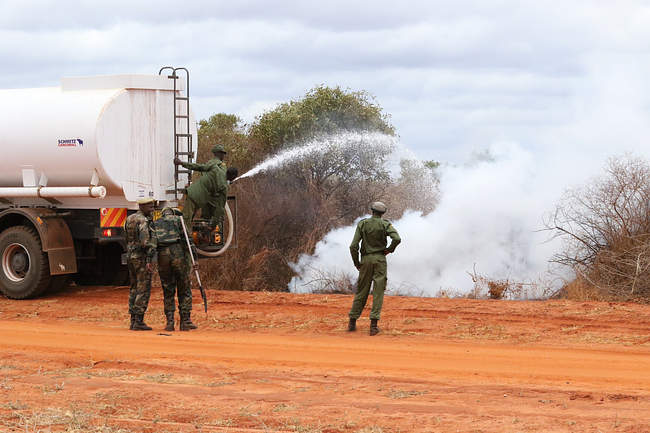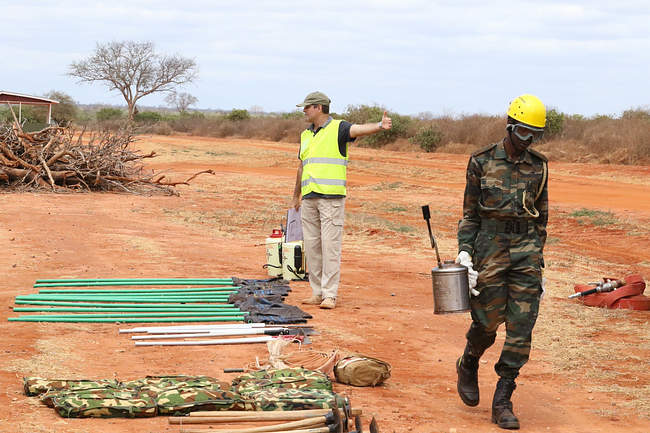Despite signs that the rains might appear early, it wasn’t until the end of the month that the first heavy showers appeared. This of course meant that poaching levels continued from the previous months, culminating in a 5-day operation following an armed gang of poachers in the Northern area of Tsavo East.
Charcoal burning activities were only noted on a handful of occasions and on a small scale, with the majority of flights to previous hotspots coming up empty. This is hugely encouraging and is a testament to the sustained effort of our ground teams and KWS, as well as the effectiveness of the new fence being constructed by DSWT along the Eastern boundary of Chyulu Hills NP. Livestock incursions elsewhere in Tsavo East were also historically low for this time of year, and it is only in Tsavo West where pressure has proven too high for the KWS to deal with.

In October, 3 separate fires were fought successfully by the helicopter with the help of the Trust’s 800 litre Bambi bucket and coordinated efforts on the ground. This significantly reduced the amount of forest cover that was lost this year due to fires, marking a positive shift from previous years where hundreds, if not thousands of acres were destroyed in annual fires.
On a positive note, only one old elephant carcass was found in October, with 2 tusks intact. In addition to the carcass, only one injured elephant was found with what appeared to be an arrow wound on its rump. A fixed wing aircraft was used to collect the Amboseli Vet and then with the help of the DSWT’s helicopter, the elephant was successfully darted, treated and given an excellent prognosis for recovery.
Highlights for the month included leopard and cheetah sightings as well as a record sighting of 13 rhino in Tsavo East and a near record sighting of 61 rhinos Tsavo West including 1 new-born.



